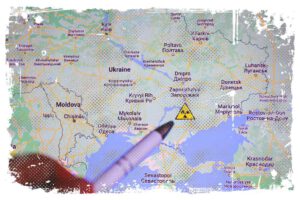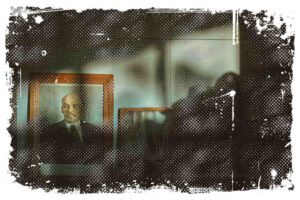Poland faced huge challenges after World War II, as the country was ruined, with most of its infrastructure, industry, and agriculture destroyed. The capital city (Warsaw) and numerous towns and villages were heavily damaged. It was also staggering that over 5 million Polish citizens perished. Rebuilding the country was a slow process. Many remnants of the war can still be seen today, such as those on the Westerplatte Peninsula.

Despite these challenges, the people showed incredible resilience as they worked to rebuild their homes, find food, and even create places for rest and entertainment. In the aftermath of the war, Gdansk faced particularly tough fighting, which led to widespread destruction in the city. However, in March 1945, the Polish government established Gdansk as a Polish city and began the process of reconstruction. It was also begun to replace the German population with Poles, many of whom had been displaced from areas lost to the Soviet Union.
Industrial Modernization After the War
The Communist modernization of Poland after World War II prioritized industrialization over innovation. While it is true that the country experienced significant industrial growth in the 1950s and 1960s, much of this development was based on outdated technologies. Heavy industry thrived at the expense of creativity and innovation during World Wars I and II, as it was strictly linked to war industries. There were some exceptions, such as innovations in the aerospace and automotive sectors. We also knew of one computer genius who was ahead of his time. However, Poland was unable to effectively make a profit on these technological advances and eventually became an importer rather than an exporter of technology. The suppression of creativity and innovation under Communism had far-reaching consequences for the country’s economic development.
Marshall Plan Banned For Poland
The United States understood that without addressing the economic devastation caused by World War II, it would be difficult to limit the spread of communism in Europe. As a result, the US proposed a plan for economic recovery in Europe. Their goal was to prevent the communist influence in countries like Italy, France, and Eastern Europe, where they were either already in power or gaining ground.
↳ PRO TIP: Do you like traveling? Then before you buy any ticket or book an attraction, check if it's available in this worldwide Viator Database. You may save a lot of money and time. No need to thank me :)
In response to this proposal, they planned to organize an international conference in Paris in July, 1947. The invitations were sent to countries across Europe, including Poland, Prague, Belgrade, and Moscow. Initially, the Polish government and Prime Minister Jozef Cyrankiewicz were supportive, but their position changed under pressure from the Kremlin. USSR Foreign Minister Vyacheslav Molotov ultimately had the final word. Based on his decision, these countries were allowed to attend the conference.
Poland Didn’t Participate in The Program
Prime Minister Jozef Cyrankiewicz made the decision not to let the Polish delegation go and attend the conference in Paris. He expressed concerns about the country’s current and enduring interests. As I said earlier, this decision was ultimately influenced by Vyacheslav Molotov, who believed that the Marshall Plan was an attempt to interfere in the internal affairs of countries within the Soviet sphere of influence. As a result, the delegations from Poland, Czechoslovakia, and Yugoslavia were not allowed to attend the conference.
This decision had significant consequences for Poland. Western European countries that did participate in the Marshall Plan received significant loans and supplies of American goods. They ranged from 1.5 billion dollars for Germany to 3 billion dollars for Great Britain.
Please, also check my other article I wrote. You will learn everything about how Poland changed after the War.
Agricultural Reform and Nationalization of Industry
After World War II, the communist authorities prepared a plan for the recovery of the economy according to Soviet models. This process began in September 1944, when the Polish Committee of National Liberation (Polski Komitet Wyzwolenia Narodowego) issued a decree on land reform. Under the provisions of this decree, all land larger than 50 hectares was taken over, divided, and given to farmers who didn’t have their own land.
The land was given to small farmers in order to win their support for the new government. At the same time, the communist authorities maintained the system used by the Germans, which required farmers to deliver a certain amount of agricultural crops and sell them to the government for official prices that were much lower than market prices. In addition, the government established State Agricultural Farms (PGR). These PGR Farms were owned by the state. There was also a plan to create agricultural cooperatives based on the Soviet model of „kolkhozes”, which were formed by farmers who contributed their land to the cooperative.
Due to strong public resistance, the idea of establishing agricultural cooperatives was abandoned in 1956. Instead, they introduced the Industrial Nationalization Act, which allowed the state to take ownership of all industrial plants and mines with more than 50 workers per shift. The state also took control of the banks. This allowed for top-down control of financial operations and foreign currency trading. It resulted in the seizure of property that belonged to the Third Reich, murdered Jews, and refugees.
In 1947, the authorities launched a campaign called the „struggle for trade” (walka o handel) which officially targeted people who made money through unfair speculation, but, in reality it was all about private trade. We also had a currency reform and the denomination of the Polish Zloty in 1950, which imposed unfavorable rules for converting bank savings versus cash. This affected people who had kept their savings at home due to the fact they didn’t trust the government. At the same time, foreign currencies and gold were banned.
The Three-Year Plan for the Reconstruction of the Economy in Poland
In September 1946, the National Council passed a resolution on the National Three-Year Plan for Economic Reconstruction that was planned for 1947-1949. It was the first project of this kind that was implemented in post-war Poland. The plan was developed by the Central Planning Office, the first economic organization in the country, and aimed to rebuild the economy after World War II.
One of the slogans of the three-year plan was:
„Whatever the enemy has destroyed, the Nation’s efforts will rebuild”.
Its main objectives were to
- raise living standards to pre-war levels
- rebuild the country within its new borders
- decrease unemployment
- reduce overpopulation in particular cities.
By 1949, industrial production in Poland had surpassed pre-war levels. However, agricultural production remained lower than before the war. The plan also included the reconstruction of transportation infrastructure. That included the railroads.
The implementation of the plan was accompanied by a campaign, which I mentioned earlier already – „battle for trade”. The campaign was supposed to bring private trade under state control through the use of taxes, criminal penalties, and administrative repression.
Warsaw After the War and Its Reconstruction
At the end of World War II, Warsaw was ruined. 85% of Warsaw’s buildings were destroyed, 90% of its industrial plants were damaged, all bridges collapsed, and 30% of its underground infrastructure was damaged.
The city was covered by 20 million cubic meters of rubble. There were also large quantities of unexploded bombs and mines. A few years earlier, Heinrich Himmler, a high-rank member of the Nazi Party, had ordered that Warsaw must be completely destroyed. To be more specific, on October 9, 1944, he ordered that „not a stone should be left.”.
The Germans nearly achieved this goal, as they destroyed almost all of Warsaw, including many priceless cultural and historical landmarks such as the Royal Castle, the Warsaw Cathedral, and the Saski Palace. The destruction of the city was a multi-year process that began in September 1939. The further damage took place during the liquidation of the ghetto and the Warsaw Uprising. By the way, here is my other article about life in Poland in September 1939. See yourself how peacefull the summer was that year.
In early 1945, the first residents of Warsaw began returning to the left bank of the Vistula River. What they saw were the devastated, lifeless ruins of the city. Despite this, they felt a strong sentiment for the place and a desire to rebuild it. On January 3rd, 1945, the National National Council made the decision to rebuild Warsaw and establish it as the capital of an independent Poland.
The whole idea of reconstruction the city’s monuments, including the Old Town, the New Town, Krakowskie Przedmieście, and Nowy Świat, was pioneering and brave. Eventually, 35 years later, in 1980, the reconstructed Old Town of Warsaw was added to the UNESCO World Heritage List. It was listed as a unique work of conservation and architecture.
The rebuilding of Poland after World War II was a massive undertaking that required significant effort and resources. The country had suffered significant damage during the war but despite these challenges Poland was eventually able to rebuild and modernize its economy.
Bibliography
- https://historia.uwazamrze.pl/artykul/1146639/co-zyskalismy-na-tej-wojnie
- https://www.propertydesign.pl/architektura/104/jak_wygladal_proces_odbudowy_warszawy_po_1945_r,5577.html
- https://bibliotekanauki.pl/books/1369820.pdf




